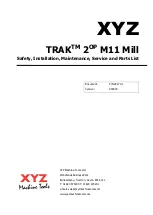
12-7
Cisco ME 3400 Ethernet Access Switch Software Configuration Guide
OL-9639-07
Chapter 12 Configuring Private VLANs
Configuring Private VLANs
•
You cannot configure VLAN 1 or VLANs 1002 to 1005 as primary or secondary VLANs. Extended
VLANs (VLAN IDs 1006 to 4094) can belong to private VLANs
•
A primary VLAN can have one isolated VLAN and multiple community VLANs associated with it.
An isolated or community VLAN can have only one primary VLAN associated with it.
•
Although a private VLAN contains more than one VLAN, only one Spanning Tree Protocol (STP)
instance runs for the entire private VLAN. When a secondary VLAN is associated with the primary
VLAN, the STP parameters of the primary VLAN are propagated to the secondary VLAN.
•
You can enable DHCP snooping on private VLANs. When you enable DHCP snooping on the
primary VLAN, it is propagated to the secondary VLANs. If you configure DHCP on a secondary
VLAN, the configuration does not take effect if the primary VLAN is already configured.
•
If the switch is running the metro access or metro IP access image and you enable IP source guard
on private-VLAN ports, you must enable DHCP snooping on the primary VLAN.
•
You can apply different quality of service (QoS) configurations to primary, isolated, and community
VLANs.
•
When the switch is running the metro IP access image, for sticky ARP
–
Sticky ARP entries are those learned on SVIs and Layer 3 interfaces. The entries do not age out.
–
The
ip sticky-arp
global configuration command is supported only on SVIs belonging to
private VLANs.
–
The
ip sticky-arp
interface configuration command is only supported on
Layer 3 interfaces
SVIs belonging to normal VLANs
SVIs belonging to private VLANs
For more information about using the
ip sticky-arp
global
configuration and the
ip sticky-arp
interface
configuration commands, see the command reference for this release.
•
You can configure VLAN maps on primary and secondary VLANs (see the
“Configuring VLAN
Maps” section on page 31-29
). However, we recommend that you configure the same VLAN maps
on private-VLAN primary and secondary VLANs.
•
When a frame is forwarded through Layer 2 within a private VLAN, the same VLAN map is applied
at the receiving and sending sides. When a frame is routed from inside a private VLAN to an external
port, the private-VLAN map is applied at the receiving side.
–
For frames going upstream from a host port to a promiscuous port, the VLAN map configured
on the secondary VLAN is applied.
–
For frames going downstream from a promiscuous port to a host port, the VLAN map
configured on the primary VLAN is applied.
To filter out specific IP traffic for a private VLAN, you should apply the VLAN map to both the
primary and secondary VLANs.
•
If the switch is running the metro IP access image, you can apply router ACLs only on the
primary-VLAN SVIs. The ACL is applied to both primary and secondary VLAN Layer 3 traffic.
•
Although private VLANs provide host isolation at Layer 2, hosts can communicate with each other
at Layer 3.
•
Private VLANs support these Switched Port Analyzer (SPAN) features:
–
You can configure a private-VLAN port as a SPAN source port.
Summary of Contents for ME 3400 Series
Page 40: ...Contents xl Cisco ME 3400 Ethernet Access Switch Software Configuration Guide OL 9639 07 ...
Page 44: ...xliv Cisco ME 3400 Ethernet Access Switch Software Configuration Guide OL 9639 07 Preface ...
Page 1138: ...Index IN 52 Cisco ME 3400 Ethernet Access Switch Software Configuration Guide OL 9639 07 ...
















































